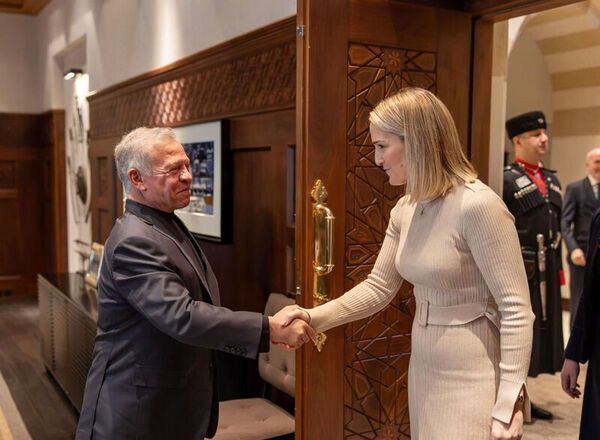Do you have an original, signed copy of a Francis O’Neill publication?
Traditional Music / By Daniel Neely
A couple of weeks ago, I mentioned ITMA’s announcement of a set of newly-discovered private recordings of the great Sligo fiddler Michael Coleman. ITMA’s director Liam O’Connor premiered these recordings on RTÉ’s “The Rolling Wave” program on Sunday and they are breathtaking. Recorded in the Queens home of James “Lad” O’Beirne in 1942, there are four new tracks in total.
Coleman is, of course, brilliant, his playing enhanced by the performance setting: a living room, surrounded by close family and friends. Among these new recordings are two unaccompanied solo tracks, one track with accordion player Tim Fitzpatrick, and finally, one with a 14-year-old Andy McGann. Given McGann’s legendary status in New York, this recording in particular will generate a good bit of interest because it significantly broadens our understanding of McGann’s development and the direct impact Coleman had. The show also featured incredible private recordings with Martin Wynne, Lad O’Beirne and Louis Quinn, each of whom has been hugely influential.

A Michael Coleman recording dated Feb. 28, 1942.
This is unbelievable, absolutely historic stuff. These sides should be considered required listening for anyone interested in Coleman’s music and traditional fiddle playing more broadly.
Sunday’s episode of “Rolling Wave” can be accessed in its entirety as a podcast on rte.ie. I definitely recommend checking it out, not simply for the recordings but for host Aoife Nic Cormaic’s chat with O’Connor, which provides the story behind these recordings. ITMA has also made the new Coleman recordings freely available to the public their website, itma.ie. Go have a listen!
A recent restoration of one of Coleman’s seminal commercial recordings.
https://www.youtube.com/watch?v=Ju3tt7dFa2s&feature=youtu.be
Speaking of things archival, one of the interesting things about academic research is finding new ways of making sense of the familiar. For many traditional musicians, Francis O’Neill is the most familiar of names, his publications being among the most important in the entire history of traditional Irish music. “Music of Ireland” (1903) and the “Dance Music of Ireland” (1907), for example, are cherished sources from which virtually every musician has drawn tunes and are among the publications that have helped make O’Neill, the one time police chief of Chicago, as much a household name in traditional music as there has been.
Ever the ambassador of Irish music, O’Neill gave away many, many copies of his books to friends and colleagues at the time of their publication, very often inscribing them with a quick note to the recipient. Those familiar with these presentation copies can readily recognize O’Neill’s most wonderfully florid hand, which makes a real visual statement. They’re just stunning to behold.
But to whom did O’Neill gift copies and why? And what can knowing who these recipients were tell us about Irish music at the turn of 20th century America? It’s hard to say, especially since these questions have never before been asked. But that is what a new project, “Capturing O'Neill - Francis O'Neill Dedication Pages,” is looking to better understand.
The project’s initial aim is to crowdsource images of O’Neill’s dedication pages held in public and private collections. While there are many copies of O’Neill’s books in libraries around the world, there are many, many more in private collections, which is why it is so important to engage the public as part of the crowdsourcing process.
The ultimate goal is to create an engaging, online gallery that will contextualize O'Neill's work with Irish traditional music within the larger Irish experience. Each of the gallery’s entries will include an image of the dedication page, a biography and (if possible) an image of the recipient, and a description of the book’s provenance. When taken as a whole, it should prove to be a compelling presentation and give new insight into O’Neill’s work as a whole.
A cylinder recording made by Francis O’Neill of Patsy Touhey, James Early & John McFadden, circa 1904.
https://www.youtube.com/watch?v=Ki68ustk8eI&feature=youtu.be
The gallery’s planned launch is in June 2021, as part of an international conference organized in Paris by the Universities of Chicago, Caen Normandy and Paris.
This project’s leader is Dr. Scott Spencer, a professor at the University of Southern California. Others working on it include Drs. Aileen Dillane (University of Limerick), Michael O'Malley (George Mason University), and myself, and it’s all happening with the support of the Irish Traditional Music Archive in Dublin and the Ward Irish Music Archives in Milwaukee.
For those interested, the O’Neill’s publications to keep an eye open for include “Music of Ireland” (1903; sometimes called “O'Neill's 1850” for the the number of tunes it contains), “The Dance Music of Ireland” (1907; sometimes called, “O'Neill's 1001,” again for the number of tunes), “Irish Folk Music: A Fascinating Hobby” (1910), “Irish Minstrels and Musicians” (1913), “O’Neill’s Music of Ireland: 400 Choice Selections Arranged for Piano and Violin” (1915), and “Waifs and Strays of Gaelic Melody” (1922).
Do you have an original, signed copy of a Francis O’Neill publication? If so, visit tinyurl.com/ONeillDedications to learn how you can contribute to this worthwhile effort!








